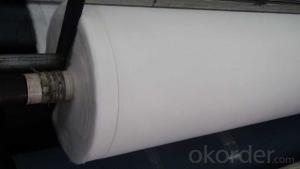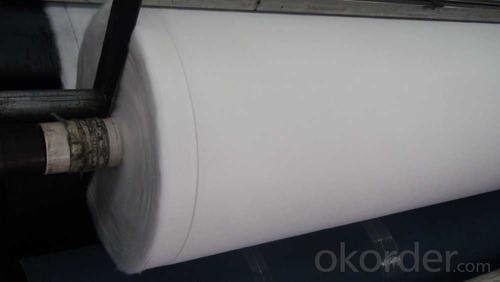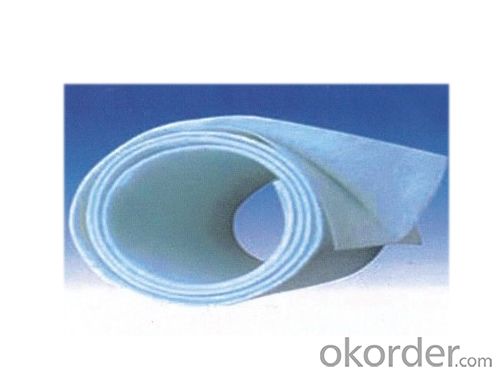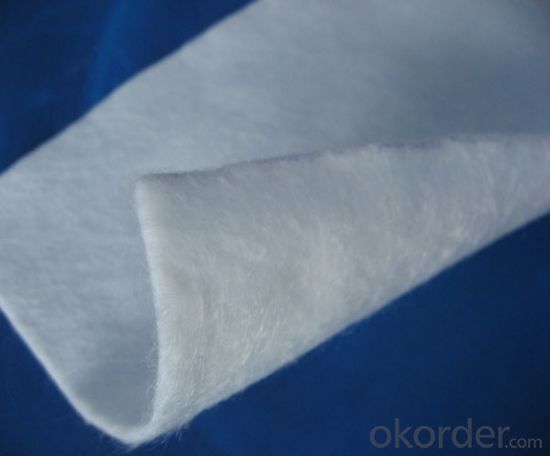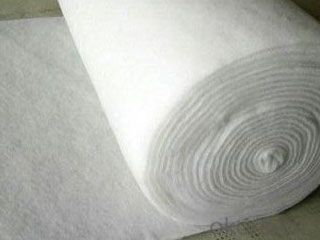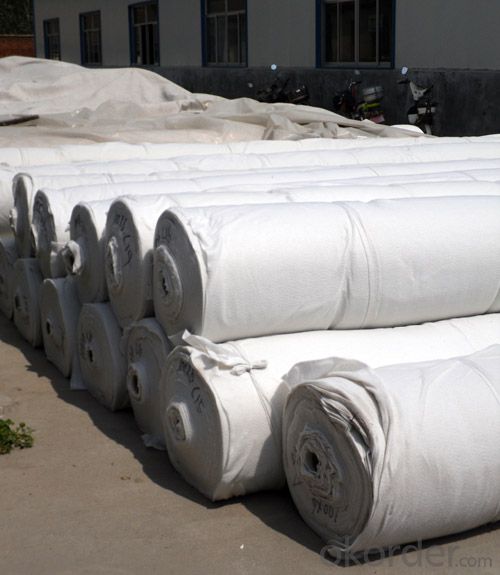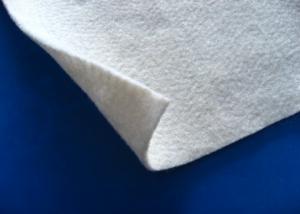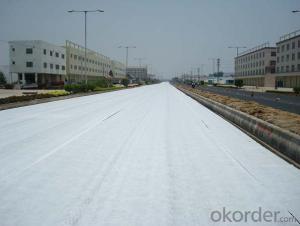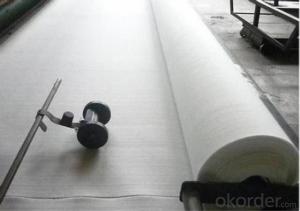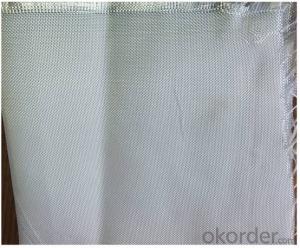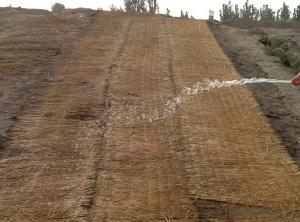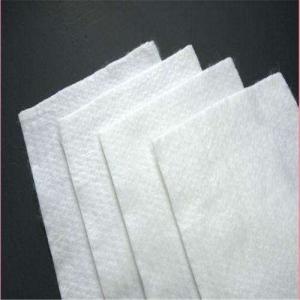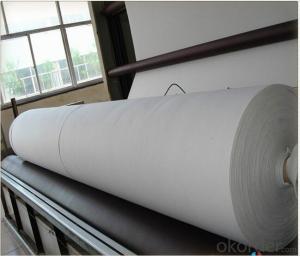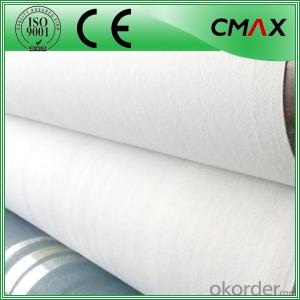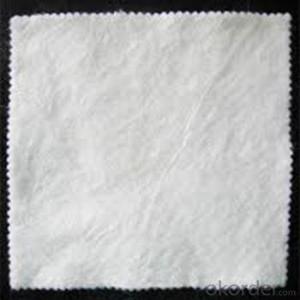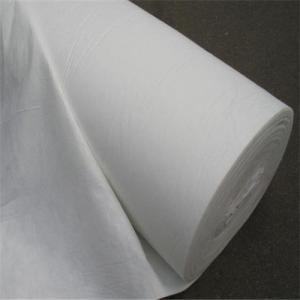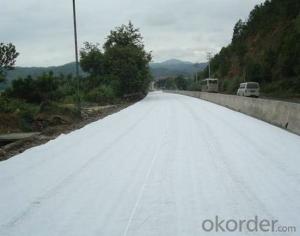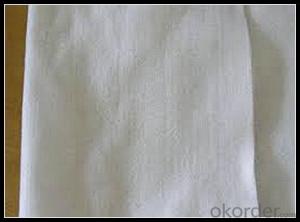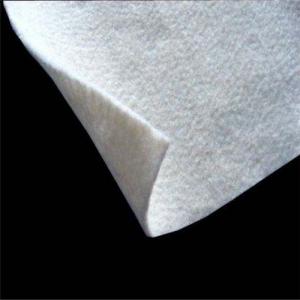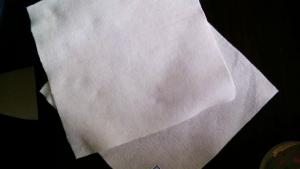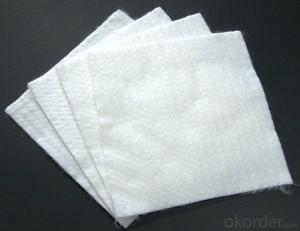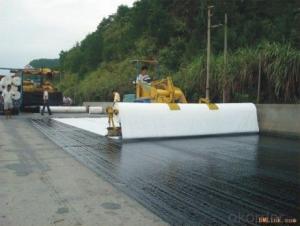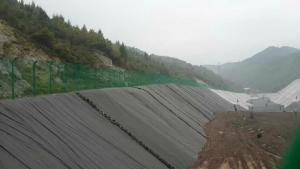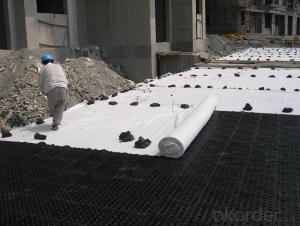Woven Monofilament PP Nonwoven Geotextile for Road Construction
- Loading Port:
- Tianjin
- Payment Terms:
- TT OR LC
- Min Order Qty:
- 10000 m²
- Supply Capability:
- 300000 m²/month
OKorder Service Pledge
OKorder Financial Service
You Might Also Like
Description of PP Nonwoven Geotextile
mainly uses polypropylene(PP),polyethylene(PE) as raw materials. After extruding.It has long term corrosion resistance in the soil and water with different PH;Due to its excellent microbiological degradation resistance. The material is light and soft, so it is convenient to transport and install.
Main Features of PP Nonwoven Geotextile
1) Weight / Mass: 70g/m2-800g/m2 .
2) Width: Within 6 m (0.5m-6m).
3) Length: 50m-200m/roll (as request).
4) Material: PP and PE
5) Color: Black , green,white , grey, others
6) Manufacturing method: extrude, woven.
7) The famous geotextile manufacturer/factory in China for many years . The equipment is introduced from Germany.
9) This geotextile can be made of polypropylene PPor PE,on needle punch machine.
10) The mass is available from 70g/m² to 800g/m² and the width available from 0.5m-6m, monolayer or multilayer (reinforcement geotextiles), long fiber or short fiber.
11) Color: all kinds of color are available. The annual production ability is 10 million square meters.
12) The fabric can also be heat treated by infrared at customer's requirements. Our geotextile are UV stabilized to give protection against aging under exposure to natural ultra-violet light.
Specifications of PP Nonwoven Geotextile
1.width:1m~8m, length: at your request
2.Color: white, black, grey.
100 | 150 | 200 | 250 | 300 | 350 | 400 | 450 | 500 | 600 | 800 | NOTE | |
BASIS WEIGHT TOLERANCE (%) | -8 | -8 | -8 | -8 | -7 | -7 | -7 | -7 | -6 | -6 | -6 | |
THICKNESS ≥MM | 0.9 | 1.3 | 1.7 | 2.1 | 2.4 | 2.7 | 3.0 | 3.3 | 3.6 | 4.1 | 5.0 | |
TENSILE STRENGTH AT BREAKING ≥KN/m | 10 | 25 | 30 | 40 | 60 | 80 | 100 | 120 | 140 | 160 | 200 | |
CBR PLUNGER STRENGTH ≥KN | 0.3 | 0.6 | 0.9 | 1.2 | 1.5 | 1.8 | 2.1 | 2.4 | 2.7 | 3.2 | 4.0 | |
TEARING STRENGTH ≥KN | 0.08 | 0.12 | 0.16 | 0.20 | 0.24 | 0.28 | 0.33 | 0.38 | 0.42 | 0.46 | 0.60 | |
BREADTH TOLERANCE (%) | -0.5 | |||||||||||
ELONGATION AT BREAKING (%) | 15 -100 | MD&CD | ||||||||||
EOS O90mm | 0.03-0.8 | |||||||||||
VERTICAL PERMEABILITY (CM/S) | K×(101~~103) | K=1.0-9.9 | ||||||||||
Applications of PP Nonwoven Geotextile
1) Filtration
The filtration layer of the dykes, river canal, seacoast, concrete slope, retaining walls. At the same time of preventing the clay granule from passing, it allows the water and the gas pass through freely.
2) Separation:
The isolation of the railway dregs and the roadbed, roadbed and the soft base, surface of the airdrome and parking lot and the groundsill, different dam materials. It isolates the soil and the gravel of two kinds different granule pathway from the groundsill or other buildings.
3 )Adding muscle:
The highway, railway, soil-stone dam, breakwater, airport, backfill soil of retaining wall, slope protection, etc in which distributes the earth stress, prevents the side-displacement of the earth body and improves the earth body stability.
4 )Protection
It prevents the bank from being washed out, protects the bank and the bottom, prevents the water and soil from being washed away.
Images of PP Nonwoven Geotextile
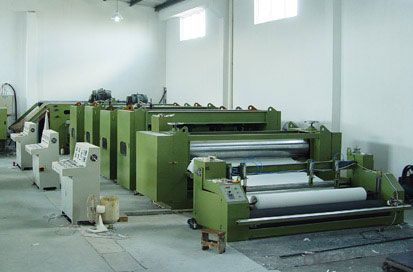
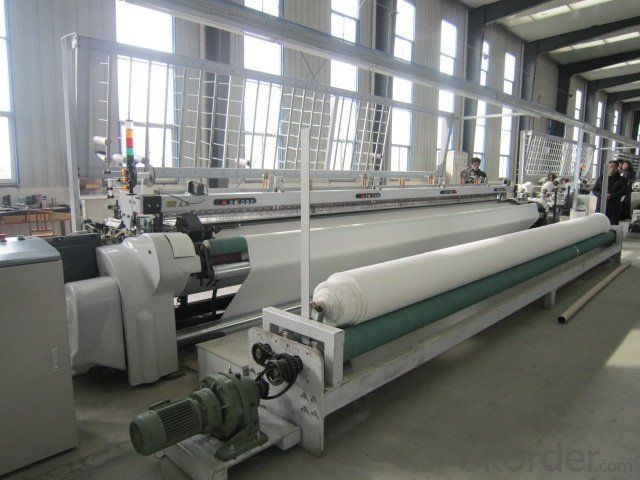
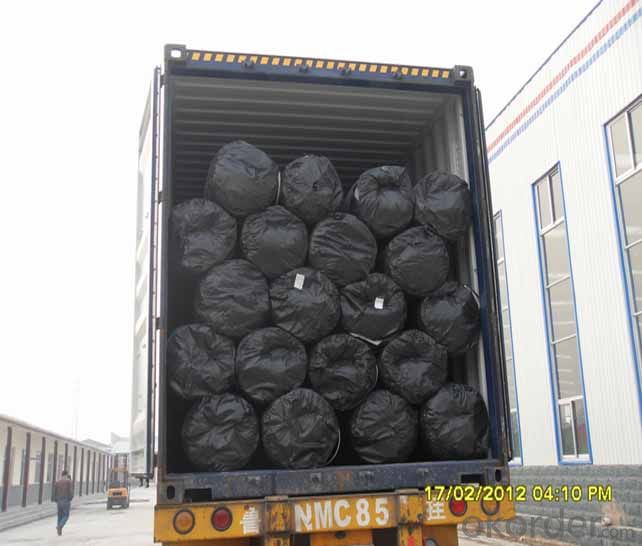
RFQ
1. Do you supply free samples for customers?
Yes,we will supply free samples for you.Please send your address for us.
2. How Many years experience do you have?
We have been exported to more than 20 countries in the past 15 years.
3. How long do we usually reply your request?
We always reply our customer within 24 hours.
- Q: What are the factors affecting the selection of geotextiles?
- The factors affecting the selection of geotextiles include the specific application or project requirements, such as the desired strength, durability, and permeability of the geotextile. Other factors include the site conditions, including soil type, slope stability, and water conditions. Additionally, the cost, availability, and environmental considerations of the geotextile should also be taken into account during the selection process.
- Q: Design of interlocking turf slope protection brick directly on the geotextile, river earth side by 1: 2.5 slope excavation, began laying geotextile, grass sand and gravel, can lay it? Geotextile laying on the grassroots what are the requirements? More
- No special requirements, mainly from the role of filtering, over the water, but I, specializing in the production of geotextile, geomembrane, wish smooth
- Q: How do geotextiles contribute to soil improvement in soft ground areas?
- Geotextiles contribute to soil improvement in soft ground areas by providing reinforcement, stabilization, and separation functions. They act as a barrier between the soil layers, preventing mixing and promoting drainage. Geotextiles also distribute loads more evenly, reducing the risk of soil settlement and increasing the overall stability of the ground. Additionally, these materials can help control erosion by effectively retaining soil particles while allowing water to pass through, minimizing surface runoff and maintaining the integrity of the soil.
- Q: How do geotextiles improve the performance of geocells?
- Geotextiles improve the performance of geocells by providing additional reinforcement and stabilization to the structure. They act as a barrier, preventing soil erosion and promoting effective soil confinement within the geocell system. Geotextiles also enhance the load distribution across the geocell walls, increasing the overall strength and stability of the structure.
- Q: What are the benefits of using geotextiles?
- Geotextiles offer several benefits, including erosion control, soil stabilization, and filtration. They prevent soil erosion by providing a protective barrier that helps retain soil particles and resist the impact of flowing water. Geotextiles also stabilize the soil by distributing loads and reducing settlement, which is especially beneficial in construction projects. Additionally, they act as filters, allowing water to pass through while preventing the migration of fine particles, improving drainage and preventing clogging. Overall, geotextiles provide cost-effective and environmentally-friendly solutions for various applications in civil engineering and construction.
- Q: How are geotextiles used in railway construction?
- Geotextiles are commonly used in railway construction for various purposes such as erosion control, filtration, separation, and reinforcement. These synthetic fabrics are placed in different layers beneath the railway tracks to provide stability, prevent soil erosion, and improve drainage. They also help to separate and reinforce different layers of soil, preventing intermixing and maintaining the overall integrity of the tracks. Overall, geotextiles play a crucial role in enhancing the performance and longevity of railway infrastructure.
- Q: Geotextile vertical and horizontal stretching the gap is too much how to adjust
- Geotextile longitudinal and horizontal tensile strength of the gap adjustment, mainly in the carding, laying the net, drawing three links to control, sort out the ratio of Daofu regulation, shop layer, shop curtain speed ratio, Sticks, input and output differences, and so are the cause of a huge gap, the other fiber curl, and so is the key. For the above adjustment, you will find the law. In order to geotextile stretch the vertical and horizontal adjustment equal.
- Q: Can geotextiles be used in coastal erosion control structures?
- Yes, geotextiles can be used in coastal erosion control structures. Geotextiles are commonly used to stabilize slopes, reinforce soil, and control erosion in various construction projects. In coastal areas, they can be employed to prevent erosion of beaches, dunes, or shorelines by acting as a barrier against the movement of sediment and soil. Geotextiles provide an effective solution for coastal erosion control structures due to their permeability, strength, and ability to withstand harsh environmental conditions.
- Q: Polyester filament geotextile performance characteristics
- Polyester filament geotextile Features: Polyester filament geotextile is made by polyester method by spinning acupuncture consolidation directly made, product specifications from 80-800g / m2 arbitrary choice, it is geotechnical engineering and civil engineering In the application of a geosynthetics, polyester filament into a network and consolidation method, the fiber arranged in three-dimensional structure. In addition to good mechanical properties, but also has a good vertical and horizontal drainage performance and good extension properties and high resistance to biological, acid and alkali, anti-aging and other chemical stability. At the same time, it also has a wide pore size range, tortuous pore distribution, excellent permeability and filtration performance. Polyester filament geotextile Uses: water conservancy project dam and slope protection of the filter, channel isolation, seepage; road, rail, airport runway foundation isolation, filter, drainage, slope, retaining wall and road reinforcement, Drainage; Port Engineering soft foundation treatment, beach embankment, harbor wharf and breakwater reinforcement, drainage; polyester filament geotextile has been widely used in the field of infrastructure construction, and gradually applied to a wider range of areas.
- Q: Can geotextiles be used for filtration of contaminants in water?
- Yes, geotextiles can be used for filtration of contaminants in water. They are commonly used in various filtration systems, including wastewater treatment plants, to effectively remove pollutants and particles from the water. Geotextiles act as a physical barrier, allowing water to pass through while trapping and retaining contaminants, thus improving water quality.
Send your message to us
Woven Monofilament PP Nonwoven Geotextile for Road Construction
- Loading Port:
- Tianjin
- Payment Terms:
- TT OR LC
- Min Order Qty:
- 10000 m²
- Supply Capability:
- 300000 m²/month
OKorder Service Pledge
OKorder Financial Service
Similar products
Hot products
Hot Searches
Related keywords
